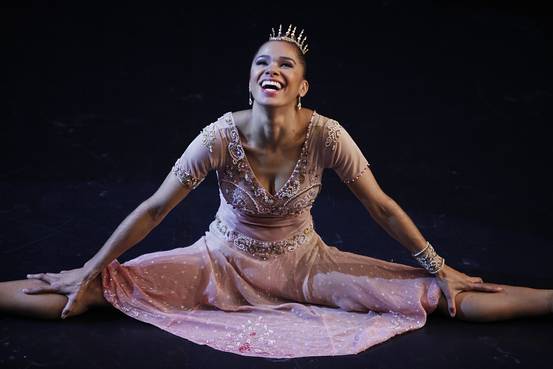The Misty Effect
A Ballerina’s Tale and the life of Misty Copeland
When I think about ballet, the words that immediately come to mind are elegant, exclusive, elitist, and if I’m being frank, white. Personally, I can attest to having very little knowledge about ballet. However, from the vantage point of an outsider looking into that world, this is what I see. I certainly would not associate themes of diversity, race, or progression with ballet. Nor would I expect to see a black principal ballerina at a major dance company. Enter Misty Copeland, an African-American principal ballet dancer at the American Ballet Theatre. For those of us who may not know about the history of ballet, the life and career of Misty Copeland is an inspiring, groundbreaking growth within the industry.
On November 4, I had the privilege of attending the Toronto premiere of A Ballerina’s Tale at the Bloor Hot Docs Cinema, which was followed by a Q&A with the director, Nelson George. A Ballerina’s Tale is a documentary about ballerina Misty Copeland at a pivotal period in her life when her career took a turn for the worse.
The film begins at the height of Copeland’s career. She was the first African-American woman to be promoted to principal dancer in the American Ballet Theatre’s 75-year history. Moreover, she was given one of the lead roles in The Firebird, a famous classical ballet written by Igor Stravinsky, which premiered at the Metropolitan Opera Theatre. To say that she had reached success would be an understatement in light of the decades of racial barriers she was shattering. Unfortunately, after this monumental show, Copeland experienced an unusual pain in her shin. This injury threatened to potentially end her career as a dancer. After achieving unbelievable success, the question of whether she would ever dance again became a crushing possibility.

The first time director Nelson George met Misty Copeland was at a cocktail party after a performance of The Firebird, during which she spoke to him about her injury. George set out to document Copeland’s journey, regardless of the outcome. In the end, this documentary captured her triumphant return to the spotlight, and truly highlighted the discipline, focus and determination she has as a performer.
During the Q&A, topics of racism and discrimination dominated the conversation. On several occasions in the film, Copeland talks about the discrimination she experienced firsthand in the world of ballet. The portrayal of racism in the film is backed up by statistics like the fact that only one percent of dancers make it into elite dance companies every year, with an even smaller fraction of that percentage being black women. There is no denying that any dancer holding a prominent position at a dance company must be the absolute best just to enter the studio; this level of excellence is expected of any dancer hoping to advance in the ballet world. However, black dancers are at a disadvantage because of institutionalized discrimination, and must therefore work much harder than their white counterparts.
When an audience member asked George why the film only had people of colour giving testimonials about Copeland, he stated that this choice was a deliberate one. He noted that “there was a reluctance to engage some of the white management because we didn’t believe we would get an honest answer from them.” George began to explain that some of the excuses used by white management towards black dancers are that “their feet don’t bend properly” or that “they have stiff feet”. Comments of this type are illogical and vain in nature, created merely to discourage black dancers from pursuing ballet. As George stated, “the idea that Copeland is too dark is truly telling of how racist this art form really is. ” Another speaker further reflected on this position when she commented that, “the next step in ballet would be the acceptance of all colours. Even the fact that we have to have this conversation in 2015, about finally having a black ballet dancer at the forefront of the American Ballet Theatre is long overdue.” This statement points to the fact that we have finally reached a time of great change. Copeland is yet another symbol of the resistance to dominant ideology in her inherently exclusionary field. The expectation is that this resistance will continue growing.

As I sat in the theatre, I felt a great sense of satisfaction and pride. Misty Copeland’s story is revolutionary. It is a story of perseverance, triumph, and passion all mixed together to result in an outstanding role model. Most importantly, it is incredibly encouraging to see someone who looks like me achieving so much, even in the most rigid of fields. The feeling that this documentary has left me with is hard to articulate. If there is one integral message I’ve learned, it is that everyone’s dreams are valid, and if you work with a persistent spirit, change is possible.
Featured image courtesy of Village Voice
